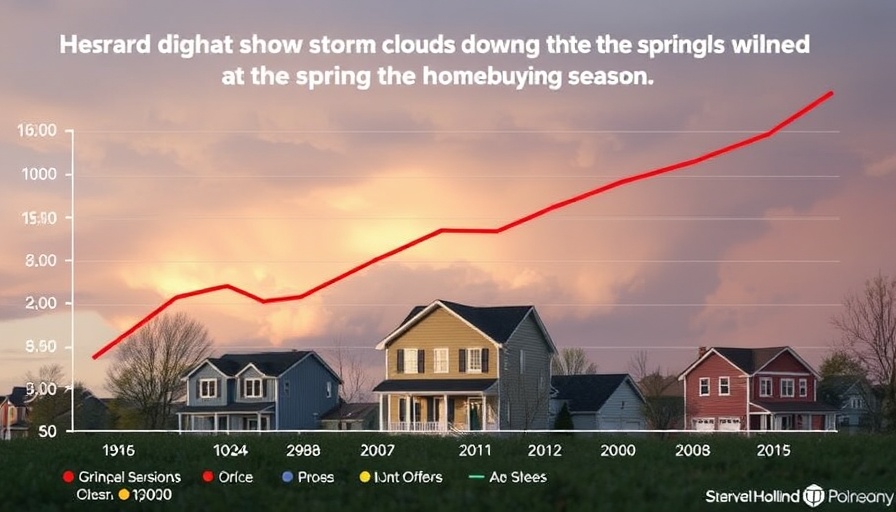
The Housing Market Faces Strong Headwinds This Spring
As we navigate through April 2025, the housing market is encountering significant challenges that threaten the vitality of the spring homebuying season. Recent trends indicate that weak construction activity, rising interest rates, and escalating costs are shaping a tumultuous climate for both builders and buyers. Major homebuilders, including D.R. Horton and KB Home, reported steep declines in sales, with KB Homes announcing a staggering $334 million loss in cash due to operational setbacks this past quarter.
Construction Activity in Decline
Data from the U.S. Census Bureau underscores the difficulties facing builders. As of March 2025, single-family permits experienced a 2% drop compared to the previous month, while new home starts plummeted by 14.2%. This constitutes the most significant monthly decline since April 2020, a period marked by pandemic-related disruptions. A decline of this magnitude raises alarms about the potential shortage of affordable housing options as the busy spring buying season approaches.
Cost Challenges for Builders
The recent survey by the National Association of Home Builders (NAHB) revealed that 60% of builders reported a rise in material costs averaging 6.3% this year. This translates to an additional $10,900 in the cost of constructing an average single-family home, further complicating the affordability issue. The tumultuous tariff situation introduced under the Trump administration, particularly the new tariffs on imports from China, has exacerbated these cost pressures, leading to uncertainty in the construction sector. With 27% of construction materials imported from China, builders are feeling the heat.
Consumer Behavior and Economic Sentiment
Consumer sentiment is equally important in shaping the housing market landscape. A recent survey conducted by Redfin revealed that over half of Americans (55%) are now less inclined to make significant purchases, largely influenced by the implications of tariffs. This cautious approach to spending not only reflects broader economic anxieties but also indicates a reluctance to enter the housing market, where affordability concerns loom large.
Comparative Industry Insights
A look at other industries affected by the current economic climate reveals similar trends. Consumer sectors ranging from retail to automotive are exhibiting caution as well. The interconnectedness of various markets highlights a fragile consumer confidence that could ultimately slow down economic recovery from the pandemic-induced downturn.
Conclusion: Monitoring the Spring Buying Season
The combination of rising costs, declining construction activity, and hesitant consumers paints a bleak picture for the housing market heading into spring. Stakeholders—builders, buyers, and policymakers—must closely monitor these trends as they develop, as the overall stability of the housing market hangs in the balance with the approaching buying season.
As the housing market continues to evolve, keeping track of these changes will be essential for making informed choices, whether you're buying, selling, or investing in this sector.
 Add Row
Add Row  Add
Add 




 Add Row
Add Row  Add
Add 

Write A Comment